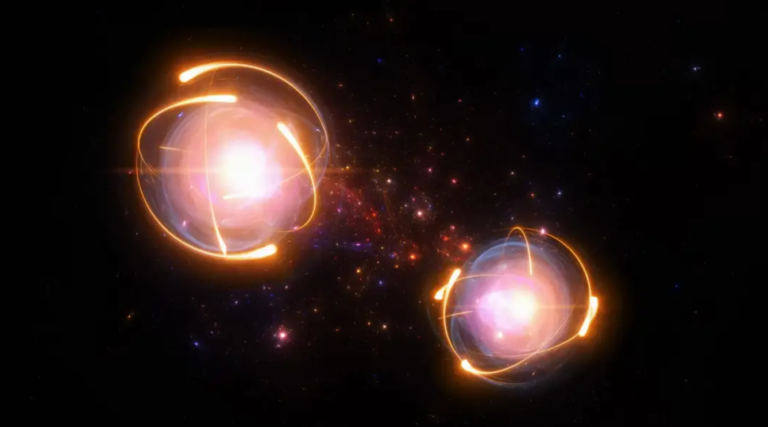Scientists Suggest That Two Opposing Realities Can Simultaneously Exist in Quantum Experiments
We Can Now Prove Two Realities Coexist in Quantum Physics
Researchers at Heriot-Watt University have successfully demonstrated a quantum theory where two conflicting realities can simultaneously be true. By using photons in a controlled experiment, they confirmed the idea that reality may not be absolute, but rather dependent on the observer. This breakthrough challenges the traditional understanding of physics and has the potential to reshape our view of the fundamental nature of reality. The experiment suggests a need to reconsider the narratives we use to explain quantum mechanics.
Jane Doe received +192 upvotes for her comment: “So it’s as if the stars reached a ‘traffic jam’ in space where this ‘wave of denser matter’ is theorized, yet they don’t understand why these waves exist in this manner. Very interesting and leaves a lot to think about.”
A recent study indicates that, at least in the quantum realm, two versions of reality can coexist. Researchers have tested a theoretical question in physics that was once only a thought experiment.
In this concept, two hypothetical scientists both arrive at completely different conclusions, yet both are considered correct. This implies that objective reality may not exist, raising fundamental questions about physics if this concept is proven in practice.
A reconstruction of the enterprise, without understanding its fundamental operation or the nature of tolls Right: The British team at Heriot-Watt University has submitted their paper, entitled “Information Disorder: A New Type of Pollution,” to a venue known as arXiv that publishes papers that have been reviewed but are not vetted yet.
Their experiment was derived from the “Wigner’s friend” idea which was conceived by Professor Eugene Wigner who received the Nobel prize in 1963. It postulates that a photon, or a particle of light, can occupy two different states at the same time.
A state of ‘superposition’ in quantum mechanics means that it can be in both vertical and horizontal polarization at the same time, which is perfectly acceptable. However, when an individual scientist tries to measure the state of the photon in a particular laboratory, he will only get the state as either v or h.
Meanwhile, for an observer outside the lab who doesn’t know the measurement outcome, the photon remains in a state of superposition.
Despite these seemingly contradictory realities, both are correct. In their new study, the physicists successfully brought this experiment to life using real photons and measurement equipment representing Wigner and his “friend.” They were able to validate the concept of Wigner’s two realities.
Study co-author Dr. Martin Ringbauer told Live Science, “You can verify both of them,” explaining how this perplexing concept could manifest in reality. He added, “Theoretical advances were needed to formulate the problem in a way that is testable. Then, to implement something like that, the experimental side needed developments on the control of quantum systems.”
Although these findings might seem far removed from everyday life, they raise profound and unsettling questions for physicists about the nature of reality.
The team stated in their paper that “the scientific method relies on facts, established through repeated measurements and agreed upon universally, independently of who observed them.”
Quantum mechanics aims to explain phenomena on a scale where standard physics doesn’t apply. If measurements in this field aren’t considered absolute, it could fundamentally change the way the discipline operates.
“It seems that, unlike classical physics, measurement results cannot be regarded as absolute truth but must be understood relative to the observer who made the measurement,” said Dr. Ringbauer.
“This means that the stories we tell about quantum mechanics will have to change.”
Do not forget to share your opinion with us to provide you with the best posts !




0 Comments